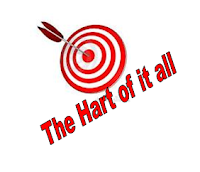Education & Video Games are No Longer Enemies
You’ve probably heard me reference the text by Steven Johnson, Everything Bad is Good for You. In it, Johnson warns us not to be too quick in judging the time young people spend with television, video games, and online apps. In fact, he suggests that modern day games and television are actually making children smarter because they encourage the development of problem-solving, critical thinking, creativity, and collaboration skills. Aligned to Johnson’s thinking, some educators are starting to use these “distractions” to their advantage to capture the engagement of kids and create an educational value.
“Gillispie’s love of gaming led him from the classroom to the district technology job, where he created a ‘WoW’ club for at-risk middle-school students in 2009. He teamed up with a New York teacher launching a similar club, and the two schools created a guild. That experience evolved into the ‘WoW’ curriculum, which is designed to meet the standards set in the new Common Core curriculum. For instance, one ‘quest’ requires students to study riddle poetry and share their notes within the guild. They write their own riddle poems based on Azeroth, edit and critique each other, then take their riddles into the wider game world to challenge outsiders.”
And What if We let Students Design the Learning Objectives and the Assessments?
As you know, we have recently placed a great deal of emphasis on Learning Targets. As I read this article, I couldn't help but think that this teachers approach required students to take ownership in their learning, ultimately meaning they knew the purpose of the lesson. The author summed up this process best in the following: "when letting the students design their learning consistently, the outcomes will include, though not be limited to:
• More risk-taking
• Creativity
• Heightened awareness of knowledge
• Heightened awareness of the learning process
• Ownership
• Increased Motivation
• Increased opportunities for collaboration
• More opportunities to refine communication skills"
• Creativity
• Heightened awareness of knowledge
• Heightened awareness of the learning process
• Ownership
• Increased Motivation
• Increased opportunities for collaboration
• More opportunities to refine communication skills"
And What if We let Students Design the Learning Objectives and the Assessments?
8 Things to Look For in Today's Classroom
As I read "8 Things to Look For in Today's Classroom", I was inspired by the classroom vision cast by author and blogger George Couros. It would be my desire to observe learning environments similar to what George describes as the 'rule' in Hilliard City Schools, not the exception.
The author shares the list below as "...some things that I believe will help the learner of today be successful in our world, both today and tomorrow." He suggests that teachers create a classroom space in which learners have: 1) voice, 2) choice, 3) time for reflection, 4) opportunities for innovation, 5) time to become critical thinkers, 6) chances to be problem solvers/finders, 7) self-assessment, 8) connected learning.
What types of amazing educational experiences could our teachers create for students if administrators challenged them to shape class time in ways that allow students to follow learning passions with their peers?
8 Things to Look For in Today's Classroom
12 Digital Tools to Implement Exit Slips
I’m sure that we can all agree on the importance of formative assessment as a regular part of classroom instruction. Along with understanding the importance of gauging student learning throughout the learning process, we must also acknowledge that the term “exit slip” has become almost synonymous with “formative assessment.” If we aren’t careful, it could go the path of the Venn diagram…sometimes overused and undervalued. Felicia Young, in “12 Digital Tools to Implement Exit Slips,” reminds us that we can keep a useful tool fresh, new, and valued by our students.
Using Fisher and Frey’s three categories of exit slips -- those that document learning, those that emphasize the process of learning, and those that evaluate instructional effectiveness – Young explores digital apps and web-based tools that not only make exit slips easy to implement and analyze, but also keep a tried and true instructional tool fresh and interesting. I encourage you to share this article with your staff members.
12 Digital Tools to Implement Exit Slips
Why is Creativity Important in Education
Perhaps my favorite question we get about the ILC is "Why is Hilliard doing this?" It's a loaded question with just as a complicated answer, but I believe this article helps support it. Creativity is what employers are saying they want to hire. Before they check the GPA, the senior year thesis, or the well written reference letters, employers of the future want one thing, creativity. Shouldn't we in the education business be trumpeting the creativity movement? If we truly believe in educating the "whole" child and making them college and CAREER ready, then creativity needs to be an embedded focus of all curriculum. For some reason creativity is a scary word at times, it doesn't need to be. Charles Mingus says this about creativity "Creativity is more than just being different. Anybody can plan weird; that's easy. What's hard is to be as simple as Bach. Making the simple, awesomely simple, that's creativity."
Why is Creativity Important in Education






No comments:
Post a Comment